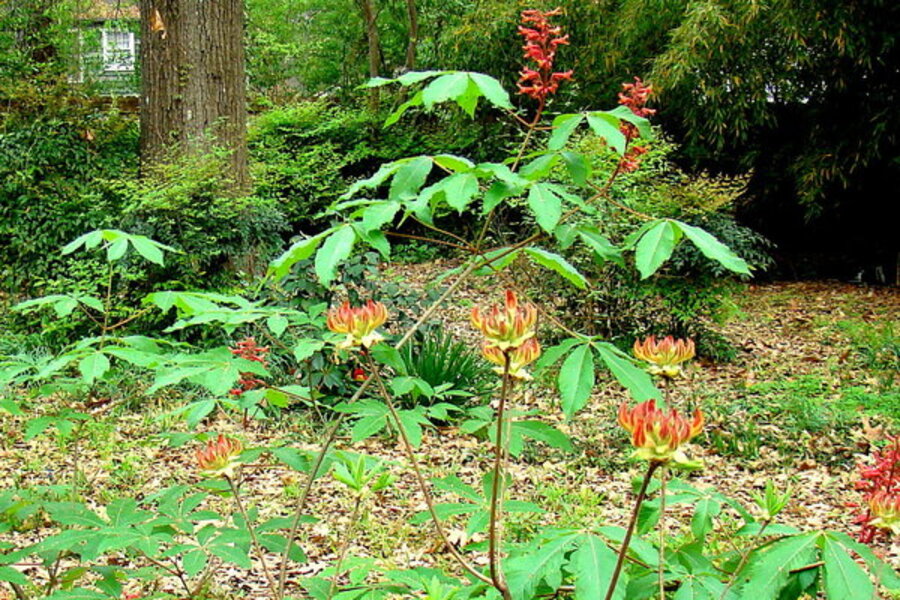Life lessons from a very personal garden
Loading...
Nice people ask to see my garden every year, and my response is always to smile and decline. Wherever my plants live, it’s a collection of interesting flora but no showplace of a garden.
I grow plants everywhere, united only by decently shaped beds with edges kept neat to relieve what could be visual chaos. The gorgeous tulips in the curve are lovely, but behind them in a gardenia in rehab. A row of huge rescued spireas are showing out, almost eliminating the view of a ragged patch of bulbs and quince behind it.
There are times, though, when parts look good enough to crow about.
The evolution of a garden
This week the woodland garden in the rear quarter-acre is stunning. I started this garden with my husband just more than a decade ago when we married. At that point, it was overgrown with escapee wisteria and a world of weeds and briars. My children had loved the wild part of our property and picked dewberries there, but their games of hide and seek amid the creepy vines were behind them.
He and I walked the space, or, more correctly, hacked our way around and through it, dreaming our shady retreat as we made a path. The high shade comes courtesy of oak and pine trees, while a bamboo wall looms on one side. A row of variegated pittosporum meets up with spireas around the woodland, offering views and blocking them at turns.
We decided to emphasize native plants in the nearly hidden garden, but to leave some of the "weeds," regardless of their lineage. We like the eruptions of boltonia, orange daylilies, and southern shield fern, and, to make room for them, we let the paths be the only interruption of the leaf-covered floor.
It seems like everything ever planted on this property eventually gravitated to this quarter, from vining euonymus to monkey grass (liriope), daffodils, and cherry laurels sprouting like tiny trees underfoot.
Once we cleared enough to see these "desirable" plants, we had a Found Garden. In the spirit of found art, we began with what was already there.
Next we collected native shrubs and trees that grow well in high shade.
One side of the main path became a solid line, where buttonbush and American silverbell step the walkway down to Adam’s needle yucca.
We left the plants on the other side of the path set back under existing trees and leafy carpet; a clump of elderberry forms the backdrop for strawberry bushes and a pair of refugee camellias.
Our chairs are between the camellias, affording a view through the garden and back toward the house.
The earliest spring scene still has a few days before it will be gone, lost to warm weather and thunderstorms. The last red camellias are hanging on, as if reluctant to fall to my pruning snips.
Hoping for more buckeyes
I’ll leave the buckeye flowers to fade in hopes they’ll produce the nuts that can lead to more trees. When the buckeyes mature, they’ll fall off. In nature they would lie there and sprout, but I’ll start them like mine began, in a gallon-size nursery pot full of their soil mixed with ground bark.
I love the open form that some plants assume when direct sunlight is limited. The whole scene can be quite ethereal, as it is now. There’s room to see between the plants in this setting, and the effect can be surprising. The native azaleas bloom before their leaves emerge, and their fat buds look suspended amid the buckeye leaves and flowers.
Bold yellow kerria flowers seem to jump off the oddly angular, thickety stems, and the ferns coming up amid fallen leaves on the garden floor simply glow chartreuse.
I prune to keep the loose style coming as the plants grow, grooming the thick nandina to "lift her skirt" and reveal the patch of yellow spider lilies beneath. When the altheas finish blooming, I tip-prune each branch to keep the airy feeling in its canopy.
This process is not one I learned in school, but rather the result of sitting in this garden often enough to watch the view as it shifts through the year. We prune and plant here to suit us, only us, and it is a rare privilege.
What I've learned
There’s a lot to be learned from gardening, and our retreat has taught us important lessons for life as well.
Whenever you inherit a garden, it’s a good idea to figure out what’s there before you start changing things. If we’d cleared the wild place entirely at first, some of its charm would have been lost to the work of imposing our design on an existing ecology. The bamboo, for example, could never have been removed successfully to put in my dream of a tall sasanqua hedgerow, and we’d have lost the doves that nest back there.
A few years in, my husband figured out how to stop the bamboo’s encroachment by stomping it at six inches tall, so we’re starting space for more shrubs and perennials in front of the bamboo curtain this year.
The same necessity to reflect before radical change is true of a marriage begun late in life. Like the wild space we made our own, we came to each other’s company already grown, a bit weedy and prickly with the briars of experience. We took the best of what we found and added to it as we have grown together in life and the garden.
-----
Nellie Neal gardens in beds and containers and on windowsills in central Mississippi and south Louisiana. She never met a plant she didn’t want to propagate. Her website is GardenMama.com. To read more by Nellie, click here.






